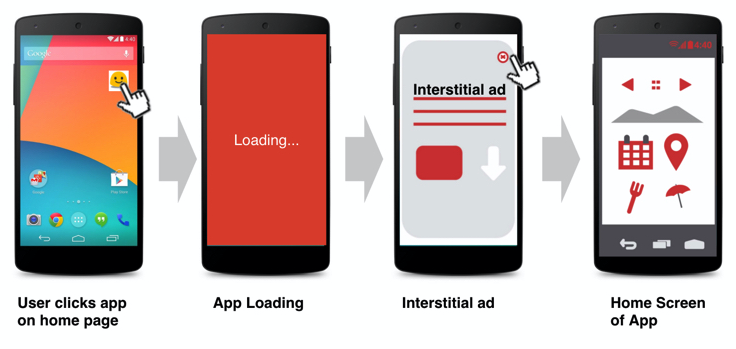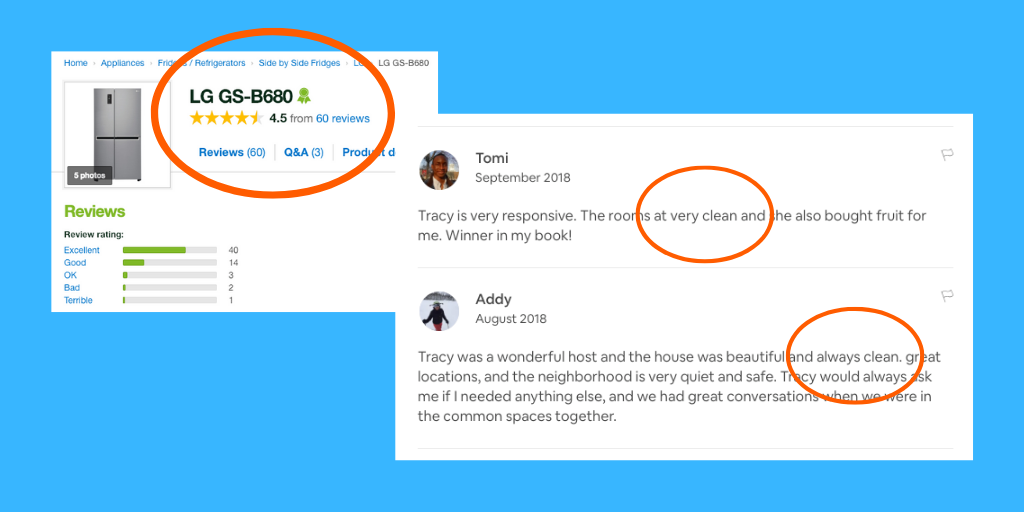In this article, we’ll look at the anatomy of trust and the importance of understanding the entire buyer’s journey. We’ll also look at five simple ways you as a UX designer can build trust and what to do if people lose trust in your product.
The anatomy of trust
We live in a world where trusting people online has become the norm. Businesses like Airbnb, Uber, and Tinder all connect people with other people through a medium. Whether the service has to do with accommodation, transportation, or romantic encounters – customers are putting their faith into everyone fulfilling their end of the deal.
So what makes us commit to using such a service? What makes us trust it?

Elements like a profile picture, biography, social media profiles, and other, additional information about someone help build a picture of that person. These elements are in addition to the photos of their car, house, or whatever product or service they are offering. They do not further explain the offer, they simply create a sense that the offer can be trusted.
The final elements are independent factors such as reviews, ratings, or whether a person has been in some way verified by the company.
Understanding the entire experience
Trust is a strange thing. You may trust the company you buy a product from. But what if their delivery company then brings you a broken item? Can you still trust the company you initially bought from? This is just one example of why understanding the whole buyer’s journey from start to finish is essential.
The journey is not over just because someone has bought something from your business. There are further steps like delivery, returns, customer support, and purchasing from you again to consider. Additionally, you need to think about customer touchpoints that occur even before someone lands on your website: your online reputation, your SEO and PPC headlines and descriptions, and whatever else is out in the wider web.
As designers, we have to appreciate that our remit may at first appear to be just on the website. But don’t forget that you also have to work with your marketing, sales, and customer support teams to understand how people are finding your product and what all their pain points are.
5 Simple ways to build trust
As UX designers, we must secure the trust and loyalty of our users. Trust is a fundamental ingredient in any purchase decision. If people can’t trust your word, then you’re going to struggle to convert users into customers. Regardless of how well-written your product or how strong the incentive is.
Fortunately, there are a few simple techniques and initiatives with which we can build trust.
1 Start at the beginning
The simplest way to work out whether a person will trust your product or not is to take a step back. Ask yourself the following question: “Would I trust this?” This is the one, fundamental thing we are trying to get right. If we don’t trust our product, neither will anybody else.
But don’t just trust your own judgement. Ask your partner, family members, and friends for their opinions, too. These insights will prove invaluable and will help you build a better product overall.
Pop-up interstitials are some of the best examples of where trust and UX aren’t thought through. These messages appear when a web page is loading. Sometimes they ask the user to sign up for a newsletter by providing their email address. Other times, they offer a discount code that is only valid for a very limited time.

The problem here is that people are being prompted to take action too soon. Discounts, for example, are a nice perk and can be a reason for people to buy your product. However, interstitials are not the right time or place to push for a sale. The potential customer hasn’t even learnt about your product yet – let alone established trust in your business.
You can still use interstitials to advertise – but think about where people are in the buyer’s journey. Let them know that there’s lots of time and that they needn’t take action right away. You can always remind potential customers of your offering later down the line when they’ve had a chance to get to know you and your portfolio.
2 Add social proof
People want reassurance that your product is amazing. But they don’t want that reassurance coming all from you. They want to see independent, impartial feedback from other people who’ve already purchased your product.
Sometimes a person’s purchasing decision can come down to the reviews. Imagine two products that are exactly the same as far as the specification descriptions are concerned. But one has more than 2000 4.5-star reviews while the other has just a couple hundred 3-star reviews. That can sway a person’s purchasing decision toward the former.

Keep in mind, though, that people aren’t dumb. If you only post your best reviews, you run the risk of arousing scepticism and perhaps causing the adverse effect – putting people off your product.
When adding social media reviews and testimonials to a website, make sure to design said website with transparency and honesty. Instead of cluttering the overall design, stick to the most important elements: the review, star rating, name, and location, if available.
3 Ditch the stock media
Stock photos, videos, and other bits of media can seem tempting. They’re quick and easy to download and stick on your website and they don’t cost anything. However, there’s a reason for that: people can usually tell the difference between an authentic photograph and a stock image.
So in the long run, investing in hiring a photographer for a day or two will pay off. A photographer will be able to take believable, high-quality pictures for you which you can use across all your marketing material – not just your website.

4 Realise that people judge books by their covers
There is a phenomenon that Nielsen Norman termed the “aesthetic-usability effect.” In short, attractive products are typically considered easier to use and overall more valuable than less attractive products.
Research your target audience to figure out what they’ll deem attractive. Conduct studies to gain an understanding of the people your product is meant for and to uncover their desires. Then, keeping the outcome in mind, design a product that will appeal to your target audience.
To further build trust, try adding security labels and images to your landing pages and checkout flows. Showing someone that your website is secure and that their data is safe if entered into your website will build a relationship between you and them.
5 Be honest
I mentioned how important being honest and transparent is in the second tip. And I cannot emphasize this enough.
More and more people are starting to realise how their data is being used, sold, and targeted by marketers. Look at the 2018 Cambridge Analytica scandal, for example, involving the illegal collection of 87 million Facebook users’ information for political purposes. Such high-profile affairs are raising awareness of the power of data.
Ask people for the information you really need – and no more. Use information tooltips to explain why you are asking for a particular piece of information. That helps put people at ease. Besides, the more information you demand from your customers, the more likely they’ll decline to give it to you.

If you want people to opt into marketing materials, clearly explain what they will get (for example, emails with promotional content) and how often they will get it (for example, twice per month). Obviously, make sure to stay true to your promises.
Rebuilding trust
Trust can be lost quicker than it can be gained. One bad PR story can lead to months of low website visits and negative social buzz about your product or service. We are seeing this problem more frequently in recent years with scandals, hacks, and loss of data. And, unfortunately, the road to recovery is long and difficult.
But we, the designers, can contribute considerably to building back trust. We can reassure existing customers and convince them not to give up on us by putting extra effort into highlighting why our product is still good. Additionally, we can create special offers and incentives to entice people to stay. Most people don’t really want to switch providers, anyway. They already have a product that satisfies their needs so putting effort into hunting for a new one isn’t very appealing.
Closing thoughts
To recap, trust is the main ingredient in any conversion. This is even more true in the digital world where trust in a company is based on its appearance, where it’s been featured, and what other people have said about it.
When designing experiences, we need to understand where our users are coming from and how they know about our company – whether that be word of mouth or a targeted, paid advert.
During the experience, we need to make sure our content reassures the user. We need to use high-quality images and security labels to build up the relationship between ourselves and the user.
Finally, after the user has bought the product, we need to make sure that the after-purchase is as satisfactory as the onboarding experience.
If you’re using third parties to deliver your product, then make sure you can trust those companies to be as careful and punctual as you yourself would be. And if a user contacts your customer service team, make an effort to really listen. Understanding your existing customers’ frustrations can help you boost loyalty and acquire new customers.
Finally, remember that trust is far easier to lose than to gain. So it is imperative that we design experiences with trust in mind.

